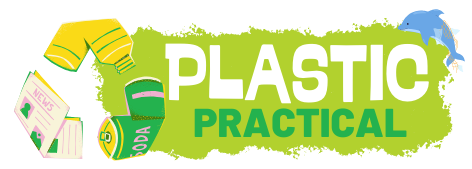I recommend choosing dog toys made from plastics with documented safety profiles, like FDA food-contact–rated HDPE or polypropylene, and avoiding vague “non‑toxic” claims; I look for manufacturer testing on chemical migration and explicit statements about additives. Prefer single‑piece, rounded designs that resist fragmentation and tolerate high‑temperature washing. Replace toys showing pitting, crazing, or brittleness and keep a rotation. If you want practical product checks and cleaning tips, I can outline them next.
Key Takeaways
- Choose plastics with documented food-contact safety (FDA or EU approval) rather than vague “non-toxic” labels.
- Prefer single-piece, molded designs without glued seams or small detachable parts that can fragment or choke.
- Select polymers known for low chemical migration (e.g., medical-grade silicone, HDPE, certain thermoplastics) and check additive disclosures.
- Use toys that tolerate high-temperature washing and routinely inspect for pitting, crazing, or brittleness.
- Communicate selection criteria and replacement policies to caregivers to ensure consistent, evidence-based toy management.
Because our dogs put toys straight into their mouths, I focus on choosing plastics with documented safety profiles and clear manufacturing information. I know that anecdote and appearance aren’t enough when ingestion, chewing, and prolonged contact are routine. I look for materials backed by testing for chemical migration, have explicit statements about additives like phthalates and bisphenols, and come from manufacturers who publish certificates of analysis or third-party lab reports. That approach reduces uncertainty and gives me metrics to compare options.
I prioritize polymers with low propensity to leach under typical use. Medical-grade silicone, certain thermoplastic elastomers (TPE) formulated without problematic plasticizers, and high-density polyethylene (HDPE) rated for food contact are examples that have supportive data when produced to appropriate specifications. I avoid vague labels such as “non-toxic” without accompanying standards; those claims can’t be verified without documented testing.
I also factor in manufacturing origin and regulatory adherence—products made to meet FDA food-contact or EU food-contact regulations generally carry more reliable data than unverified imports. Mechanical safety matters alongside chemistry. I assess tensile strength, tear resistance, and whether pieces can fragment under expected bite forces. Even chemically inert plastics become hazards if they fragment into sharp or swallowable pieces.
I prefer single-piece constructions over glued assemblies, because adhesives and joints are additional chemical and mechanical failure points. Where possible, I choose toys designed with rounded profiles and sizes that minimize choking risk for the specific dog using them. Cleaning and maintenance influence chemical exposure and microbiological safety.
Plastics that tolerate high-temperature washing or steam sterilization without degrading are preferable, because wear accelerates both mechanical breakdown and additive migration. I follow manufacturer cleaning instructions and replace toys showing surface pitting, crazing, or brittleness—changes that correlate with increased material release and structural failure.
I balance durability with detectability: materials that persist indefinitely may be chemically stable but present long-term ingestion risk if fragments are swallowed. Conversely, very soft plastics can shed microfragments. Monitoring use patterns—how aggressively a dog chews, whether they swallow bits—guides material choice and replacement frequency. I keep a small stock rotation to swap worn items proactively.
I communicate these criteria to caregivers and recommend documented-product selections rather than relying on intuition alone. That reduces stress, supports consistent decision-making, and aligns choices with available evidence. Ultimately, I aim for pragmatic, testable safeguards that protect health while respecting dogs’ natural behaviors.
Frequently Asked Questions
Are Recycled Plastics Safe for Dog Chew Toys?
Yes — but cautiously. I review studies and labels, and I’ll avoid unknown additives, BPA, PVC, and recycled content lacking food- or toy-grade certification; I recommend certified, tested recycled plastics and veterinary guidance for your dog’s safety.
How Do I Know if a Toy Contains BPA?
Look for labels saying “BPA-free,” check manufacturer specifications or material codes (avoid #7 unless specified), request test reports or certifications, and I’ll advise avoiding unclear products while prioritizing third-party safety verification for your pet’s health.
Can Scents or Dyes Leak From Plastic Toys?
Yes — scents and dyes can leach from plastic toys. I recommend choosing non-toxic, tested products, avoiding strong fragrances, and inspecting toys for fading or stains; consult manufacturer safety data if you suspect chemical migration.
Are Microwave or Dishwasher-Safe Labels Relevant for Toys?
Yes — I consider those labels relevant because they indicate heat-stability and potential additive migration; I recommend following them, avoiding high-heat cleaning if not labeled, and choosing toys with explicit safety testing to minimize chemical risks.
How Should I Dispose of Worn Plastic Dog Toys?
I toss torn toys like I toss expired meds—quickly and safely: cut them into pieces, separate metal parts, and recycle plastic where accepted; if recycling isn’t available, dispose in regular trash to prevent choking hazards.

